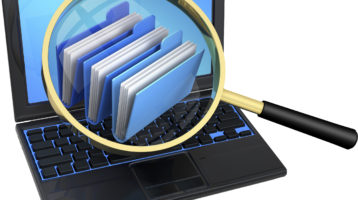Considering SaaS-Based E-Discovery? 8 Things to Know Before You Buy
Call CONCORD today
10x Faster than the competition
(800) 246-7881

Each day it seems more e-discovery software options are coming in the form of cloud-based services. However, not all cloud e-discovery solutions are created equal. Software-as-a-service (SaaS)-based e-discovery provides instant access to data, full control over the process, and the ability to “know now” to assess the merits of your case and develop an informed, winning strategy.
Consider this: By 2020, data will grow more than five times the current amount—reaching 44 zettabytes. Despite the onslaught of digital data that corporate counsel must manage during discovery, they also have to keep a lid on costs, said Zapproved’s Brad Harris. In fact, managing data volumes and the corresponding escalating costs are listed as corporate counsels’ top two concerns, according to a recent BDO Consulting study. Managing all this data is expensive, especially when inefficient processes burden organizations.
Regardless of data volume or caseload, SaaS means depending on others are over, he said. Below are attributes of SaaS attorneys and law firm CIOs should look for when considering buying a cloud-based discovery solution. (Harris recently offered the top five listed below in a Legaltech News column).
1) Shared resources, reduced costs.
Affordable predictability is a benefit afforded by the economies of scale that single-instance multi-tenant software (true SaaS) provides. This is how SaaS disrupts the status quo on pricing, offering the transparency of clear subscription pricing for processing and storage. Customers pay only for what they need using shared resources, and costs are far more predictable.
2) Scalability and elasticity, with the ability to “right-size” capacity requirements to need.
While scalability and elasticity go hand-in-hand, they are distinct benefits that can only be offered by a true SaaS solution. Scalability provides a strategic advantage by allowing instant increases in processing power to absorb expected (or unexpected) increases in data volume without large upfront investments in infrastructure. Elasticity provides a tactical advantage by allowing dynamic expansion or contraction of available capacity to meet the variable spikes that often occur in caseloads.
3) Ease of deployment and use.
Legal departments looking for greater control and independence by bringing processes in-house will need solutions that are quick to implement, that don’t require IT personnel to maintain, and are easy to use. True SaaS solutions are designed with the consumer in mind and are maintained by the software vendor so there are no surprises during deployment or ongoing maintenance.
4) No-hassle upgrades.
Use what you need today and be ready for tomorrow — that’s the essence of a SaaS approach. Legal teams should require continual, hassle-free upgrades from any e-discovery solution so they’re always ready to meet current demands.
5) World-class data security.
In an era of data breaches, inadequate security is becoming a deal-breaker for corporate counsel. Security associated with the shared resource of the public cloud benefits customers with layers of world-class data security that is vastly superior to what organizations can implement on their own.
6) Know your options.
As Jonathan Glass, cloud security technical product manager at Dell SecureWorks, explained, there are three primary cloud models: SaaS, PaaS and IaaS.
SaaS is a software licensing and delivery model in which software is licensed on a subscription basis. It provides applications for end-users that are delivered over the Web and are typically accessed by users via a Web browser or an application-programing interface (API). Examples of SaaS include Salesforce and Eloqua.
PaaS provides an environment for developers and companies to create, host and deploy applications, saving developers from the complexities and expense of setting up, configuring and managing servers and databases.
And finally, IaaS refers to third-party providers that host hardware, software, servers, storage, applications and provide system maintenance, backup and resiliency planning.
7. Know what your peers are doing.
According to the 2015 Am Law-LTN Tech Survey survey, 62 percent of Am Law 200 firms have invested in SaaS-based services for e-discovery and/or litigation support—a trend driven by corporate clients looking for greater flexibility and cost savings, said Steve Ashbacher, vice president of litigation solutions with the LexisNexis software and technology business.
8. Size does matter.
The size of the law firm makes a difference when it comes to choosing the right e-discovery business model given that small and large firms’ in-house resource pools look very different.


